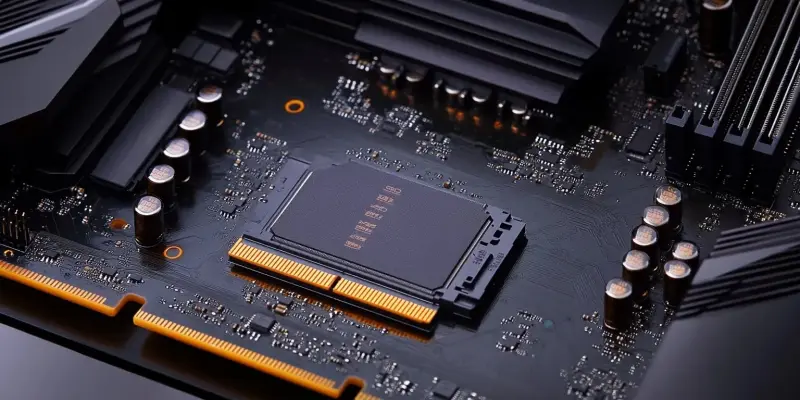In a substantial leap forward for memory performance, ASUS has announced the upgraded AEMP III feature that significantly enhances support for high-capacity DDR5 memory modules on their Intel 800-series motherboards. The ASUS Enhanced Memory Profile III (AEMP III) allows configurations of up to 256 GB of DDR5 memory using 4x 64 GB UDIMM modules, achieving remarkable speeds of 5600 MT/s. This new capability marks a notable improvement from the previous limit of 4400 MT/s and 2x DIMM configurations, underscoring ASUS’s continued commitment to pushing the boundaries of memory technology.
The memory industry has long pursued higher DDR5 frequencies, with some manufacturers achieving speeds over 10000 MT/s. Nevertheless, reaching these speeds becomes increasingly challenging as memory capacities and the number of DIMMs increase. ASUS’s introduction of the AEMP III profile addresses these challenges head-on. By incorporating this advanced profile, the performance and stability of memory with higher capacities and multiple DIMMs are maintained, especially for configurations involving 4x DIMMs. This innovation ensures that users can experience higher speeds without compromising system reliability.
Performance Benefits and Applications
ASUS highlighted the advantages of its AEMP III feature using an impressive setup: a Core Ultra Series 2 processor on the ROG Maximus Z890 Extreme motherboard, paired with 4x 64 GB Kingston DDR5 memory. By utilizing the AEMP III profile, desired clock speeds were effortlessly achieved, marking a significant boost in memory performance. Currently, this profile is exclusive to Kingston 64 GB UDIMM DDR5 modules. When detected, the BIOS automatically activates the AEMP III feature, streamlining the process for users.
The potential performance gains are striking. ASUS claims that enabling AEMP III can provide up to a 27% improvement compared to DDR5-4400 memory kits. While specific benchmarks and application details have yet to be shared, the promise of considerable enhancements in various applications and games is clear. This potential for increased efficiency positions ASUS’s enhanced memory profile as a strong player in the high-capacity, high-frequency memory market.
In summary, the introduction of AEMP III by ASUS marks a meaningful advancement in memory technology. Supporting high-capacity, high-frequency DDR5 memory on Intel 800-series motherboards, this feature delivers a substantial performance boost for a wide range of applications. Mainstream desktop users can now enjoy a workstation-like experience, making it a significant development for demanding tasks. This advancement in memory stability and capacity underscores ASUS’s dedication to innovation and improves the overall user experience in increasingly complex computing environments.

